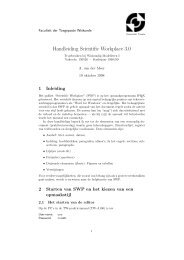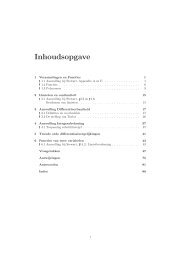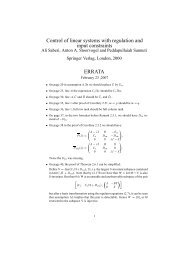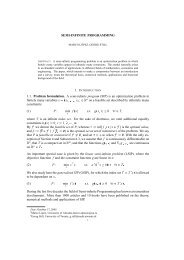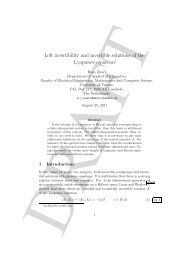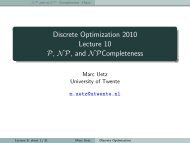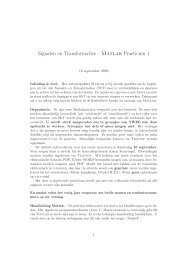Dispersion and dissipation error in high-order Runge-Kutta ...
Dispersion and dissipation error in high-order Runge-Kutta ...
Dispersion and dissipation error in high-order Runge-Kutta ...
You also want an ePaper? Increase the reach of your titles
YUMPU automatically turns print PDFs into web optimized ePapers that Google loves.
of m-stage l<strong>in</strong>ear SSP-RK schemes, given recursively by<br />
u (0) = u n ,<br />
u (i) = u (i−1) + ∆tLu (i−1) , i = 1, . . .,m − 1 (21)<br />
u (m) =<br />
m−2<br />
∑<br />
k=0<br />
u n+1 = u (m)<br />
where α 1,0 = 1 <strong>and</strong><br />
α m,k u (k) + α m,m−1<br />
(<br />
u (m−1) + ∆tLu (m−1)) ,<br />
α m,k = 1 k α m−1,k−1, k = 1, . . ., m − 2<br />
α m,m−1 = 1 m! ,<br />
α m,0 = 1 −<br />
m−1<br />
∑<br />
α m,k ,<br />
k=1<br />
are mth-<strong>order</strong> accurate. This was extended to l<strong>in</strong>ear non-autonomous systems by Chen<br />
et al. [6]. In that work the authors demonstrated that when applied together with the<br />
classical discont<strong>in</strong>uous Galerk<strong>in</strong> method [9, 11], the SSP-RK scheme gives (p + 1)st-<strong>order</strong><br />
convergence with the stability bound<br />
CFL(p) = C 1<br />
2p + 1<br />
(22)<br />
with C = 1, as long as for a given spatial discretisation of polynomial <strong>order</strong> p, the<br />
correspond<strong>in</strong>g SSP-RK method has <strong>order</strong> p + 1. The stability regions of several SSP-RK<br />
methods <strong>and</strong> the low-storage five-stage fourth-<strong>order</strong> <strong>Runge</strong>-<strong>Kutta</strong> method are displayed<br />
<strong>in</strong> Figure 2.<br />
5 Analysis of the dispersion <strong>and</strong> <strong>dissipation</strong> <strong>error</strong><br />
A critical factor <strong>in</strong> the numerical simulation of wave-propagation is the artificial <strong>dissipation</strong><br />
<strong>and</strong>/or dispersion <strong>in</strong>flicted on the waves due to numerical discretisation <strong>error</strong>s. In<br />
<strong>order</strong> to analyse these properties of the different schemes, we resort to the one-dimensional<br />
<strong>and</strong> two-dimensional forms of the Maxwell equations with periodic boundary conditions.<br />
First, these reduced models are formulated <strong>and</strong> then we perform a numerical Fourier<br />
analysis of the fully discrete schemes to <strong>in</strong>vestigate the dispersion <strong>and</strong> <strong>dissipation</strong> <strong>error</strong>s<br />
as a function of mesh size per wave length <strong>and</strong> time step. This analysis provides important<br />
<strong>in</strong>formation on the accuracy of the schemes regard<strong>in</strong>g wave motion <strong>and</strong> the relation<br />
between time step, mesh size <strong>and</strong> polynomial <strong>order</strong>.<br />
5.1 Wave equation <strong>in</strong> one <strong>and</strong> two dimensions<br />
The Maxwell equations <strong>in</strong> one dimension read<br />
ε r<br />
∂E<br />
∂t = −∂H ∂x ,<br />
µ ∂H<br />
r<br />
∂t = −∂E ∂x , (23)<br />
10



